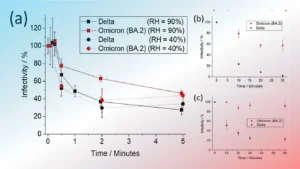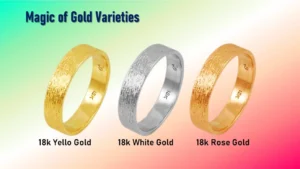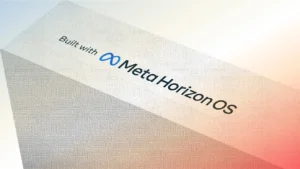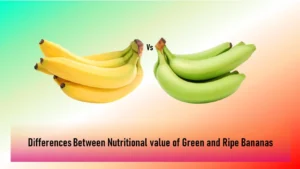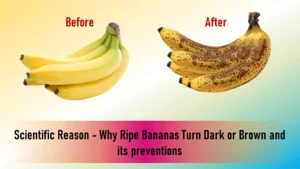What is Indian Patent Act 1970?
The Indian Patent Act (IPA) 1970 which came into force in 1972 was in many ways a watershed in the history of the patent system. It not only disallowed the grant of product patents in the highly sensitive and socially relevant health sector, but also restricted the validity period for process patents in these sectors to seven years from the date of filing or five years from the date of sealing whichever was earlier.
Since the period required for discovering and developing a new drug is not less than 10 years, the provision for process patent with the shortened period of validity had made the system itself redundant.
The consequence of such a radical change in the Indian patent system led to a major shift in the nature and character of the Indian industry.
Many foreign companies discouraged by the provisions of IPA 1970 and the Foreign Exchanges Regulation Act (FERA) which allowed new investments only for companies with a foreign equity holding of 40 per cent or less opted not to operate in India.
If India today is an accepted leader in the production of generic drugs of high quality to meet the needs of practically all the global markets, the credit should go to this piece of legislation.
In fact, within a decade of IPA 1970, the pecking order of the Indian industry changed wholly with Indian companies occupying seven of the top ten positions, a reversal of the pre-1970 era.
The Indian Patents Act 1970 (as amended up to 2005)
Through the three amendments to the Patents Act, 1970, India has made the India Patent Laws, TRIPS compliant, substantially.
Of these the most important amendment is the inclusion of food, pharma, and chemical industry within the ambit of patent protection for both process and product.
It may be recalled that the original Patents Act, 1970 had kept these three sectors out of product patenting and they were given a rather brief period of process patent protection.
The Act also introduced a section which deals with compulsory licensing of pharmaceuticals for export purposes.
This is meant to facilitate the Indian industry to continue supplying cheaper generic versions of patented drugs to those least developed countries that do not have adequate domestic manufacturing capabilities.
The Novartis cases
Novartis v. Union of India & Others was a landmark case, which was heard by a two-judge bench of the Supreme Court of India. The matter pertained to the issue of evergreening of pharmaceutical patents.
The decision in the matter was pronounced on April 01, 2013, thus culminating a seven year-long litigation fought by Novartis for the granting of an Indian patent on imatinib mesylate in beta crystalline form.
A patent, as desired by Novartis, would have restrained Indian generic pharmaceutical manufacturers from producing drugs based on the compound.
However, the Supreme Court decided that the substance which Novartis sought to patent is already known and thus does not qualify the test of invention as laid down in section 2(1)(j) and section 2(1) (ja) of the Indian Patent Act, 1970 (as amended in 2005). As a result, the Court rejected the patent application.
Essentially, the Supreme Court upheld the Intellectual Property Appellate Board’s decision to deny patent protection to Novartis’s application covering a beta crystalline form of imatinib-the medicine Novartis brands as Glivec, and which is very effective against the form of cancer known as chronic myeloid leukaemia (CML).
The decision came as a decisive blow to Novartis, which attempted monopolising the Indian market for Imatinib – a widely used drug to check the spread of a specific type of Leukaemia.
Significance of the Judgement
The significance of the Supreme Court judgment on Novartis’s patent application lies in restoring the connection between patents and innovation by upholding and legitimizing a regime with a higher threshold of inventiveness.
The decision for the first time tested the validity and ambit of section 3(d) of the Indian Patent Act which prevents the grant of a patent for new forms of known substances, unless the applicant can establish the new form demonstrates an increased efficacy.
The decision also ensures steady availability of low-cost generic versions of life saving drugs based on imatinib or imatinib mesylate polymorphs.
Compulsory Licensing & The Nexavar case
Compulsory License
- Compulsory licenses are generally defined as authorizations permitting a third party to make, use, or sell a patented invention without the patent owner’s consent.
- In 2012, Patent office issued India’s first Compulsory license (CL) to Natco for Nexavar – sorafenib tosylate, an anti-cancer drug produced by Bayer
Laws prevailing with respect to the Compulsory license: Patents Act, 1970
As per Section 84, any person who is interested can make a request for grant of Compulsory Licence on patent after three years from the date of grant of that patent on the condition that the reasonable requirements of the public with respect to the patented invention have not been satisfied, or that the patented invention is not available to the public at a reasonably affordable price, or that the patented invention is not worked in the territory of India.
The Nexavar Case
The Intellectual Property Appellate Board (IPAB) in March 2013 upheld the grant of compulsory licence (CL) to the Hyderabad-based Natco Pharma Limited, a generic drug maker, to produce and market Sorafenib, a patented cancer drug of multinational pharma major Bayer Corporation sells under the brand name Nexavar. The order paved the way for reduction in the prices of costly lifesaving drugs.
Disposing an appeal filed by Bayer Corporation, the Board held that various international conventions and Indian laws allowed the member countries to grant such compulsory licence in order to make life-saving medicine cheaply available to the public.
As per the licence conditions imposed by Controller, Natco had to pay a six per cent royalty to Bayer from the sales of generic drug Sorafenib. Modifying this, the IPAB directed Natco to pay seven percent royalty.
A short background
- The case involves a drug called Sorafenib, used to treat advanced liver and kidney cancer to extend the life of a patient.
- The patent both in India and in the United States — for the drug is held by the multinational company, Bayer Corporation. Bayer obtained a patent in India in 2008.
- Nexavar costs Rs. 2.8 lakh for a pack of 120 tablets, equivalent to a month’s dosage. The drug is a blessing for such patients to extend their life expectancy. But, the availability of the drug from Bayer at a selling price of Rs. 2.8 lakh for a month’s dose is too exorbitant for India.
- On March 9, 2011, the Controller of Patents, Mumbai, granted the first-ever compulsory license to Natco to make ‘sorafenib tosylate’, a generic version of Bayer’s high-priced anticancer drug Nexavar. Natco was told to sell the pack at Rs. 8,800.
- Bayer then appealed against the Controller’s order before the IPAB. Among other reasons, it contended that Cipla had started selling its generic version at a lower price, rendering the compulsory licence unnecessary as the drug was available at a reasonable price.
- Upholding the compulsory license, the IPAB pointed out that even after obtaining a patent, Bayer had not made the drug available on a large scale and at an affordable price within the stipulated time.
- Going into various submissions and affidavits filed by Bayer, the Board also came to the conclusion that its pricing of Rs.2.8 lakh was not affordable.
- Among other setbacks for Western drug companies, India has revoked patents granted to Pfizer Inc’s cancer drug Sutent, Roche Holding AG’s hepatitis C drug Pegasys and Merck & Co’s asthma treatment aerosol suspension formulation.
Patents (Amendment) Rules, 2021
The Patents Rules, 2003 were amended by the Patents (Amendment) Rules, 2021 which came into force on 21st September 2021.
The rules reduced the fee for patent filing and prosecution for educational institutions by 80 percent.
The move has been taken to strengthen innovation and creativity in the knowledge economy.
The “educational institution” category can be claimed by filing supporting documentary evidence to this effect. However, the nature of documentary evidence has not been specified.
The fee applicable for an educational institution has been made the same as that for a natural person, startup or small entity.
Also Read:
National Intellectual Property Rights (IPR) Policy 2016
Protection of Plant Varieties and Farmers’ Rights Act 2001



